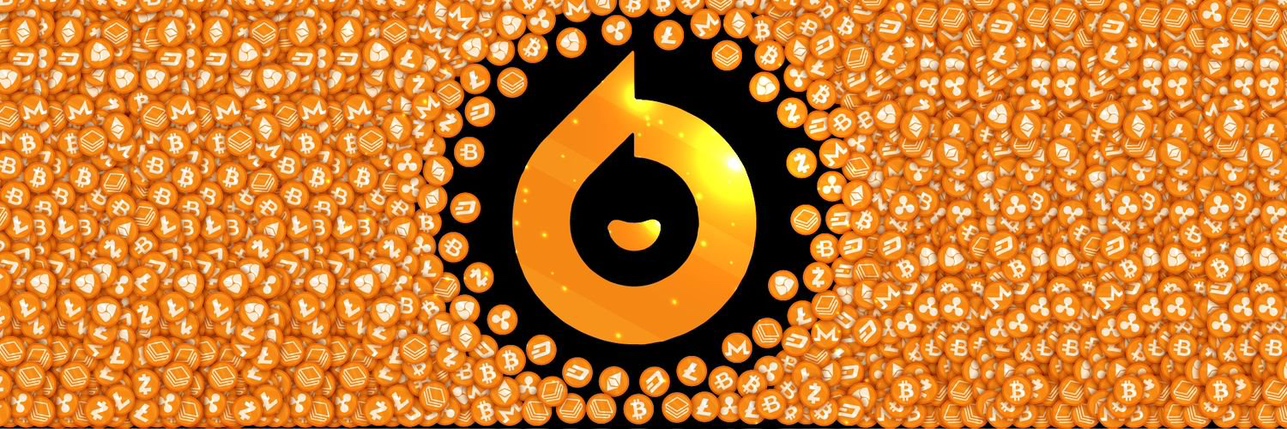
Polygon priceMATIC
Polygon market Info
Live Polygon price today in USD
Der Kryptomarkt zeigte sich am 17. Oktober 2025 in einer Phase erheblicher Turbulenzen, die von makroökonomischen Ängsten und einem deutlichen Rückgang der Anlegerstimmung geprägt war. Bitcoin (BTC) und Ethereum (ETH) führten einen breiteren Marktabschwung an, während spezifische Altcoins trotz der Volatilität bemerkenswerte Bewegungen zeigten. Dies geschah inmitten einer Flut von Liquidationen und einer zunehmend vorsichtigen Haltung der Anleger, obwohl einige Analysten die aktuelle Situation als Akkumulationsgelegenheit betrachteten.
Marktabschwung und makroökonomische Belastungen
Der Kryptowährungsmarkt erlebte heute den dritten Tag in Folge einen erheblichen Rückgang. Bitcoin fiel auf unter 109.000 US-Dollar und erreichte zwischenzeitlich Werte um 105.231 US-Dollar, während Ethereum unter die Marke von 4.000 US-Dollar rutschte und bis auf 3.731 US-Dollar sank. [1] Die gesamte Marktkapitalisierung sank unter 3,8 Billionen US-Dollar. [21] Dieser Abwärtstrend wurde maßgeblich durch die wieder aufkeimenden Ängste im US-Bankensektor ausgelöst, nachdem Berichte über faule Kredite bei zwei regionalen US-Banken aufkamen. [1] Darüber hinaus trugen anhaltende Handelsspannungen zwischen den USA und China zu einer allgemeinen Risikoaversion an den globalen Märkten bei. [5] Dies führte zu einem „Flight to Safety“, bei dem Anleger risikoreichere Anlagen, einschließlich Kryptowährungen, mieden und stattdessen sicherere Häfen wie Gold suchten, das ein neues Rekordhoch erreichte. [5]
Die Auswirkungen dieser Ereignisse waren auch in den Liquidationszahlen deutlich. Innerhalb der letzten 24 Stunden wurden Krypto-Positionen im Wert von 723 Millionen US-Dollar liquidiert, wobei der Großteil auf Long-Positionen entfiel. [1] Dies folgte auf ein turbulentes Ereignis in der Vorwoche, bei dem Liquidationen im Wert von 19 Milliarden US-Dollar den Markt erschütterten. [5]
Anlegerstimmung auf Tiefpunkt, aber Akkumulation im Fokus
Die Anlegerstimmung erreichte einen Tiefpunkt, wie der Crypto Fear & Greed Index zeigte, der auf ein Jahres-Tief von 24 („Fear“) sank. [2] Das Interesse an Suchanfragen nach „Bitcoin“ bei Google lag ebenfalls auf einem der niedrigsten Stände seit Monaten, was die nachlassende Begeisterung widerspiegelt. [2, 4] Trotz dieser bärischen Signale sehen Analysten von Bitwise in der aktuellen Korrektur eine „goldene Gelegenheit für Anleger, zu akkumulieren statt in Panik zu geraten“. [2, 4] Sie argumentieren, dass externe Faktoren wie die Handelsspannungen die Hauptursache für den Rückgang seien und dass solche Phasen oft den Beginn eines Erholungszyklus markieren. [2]
Altcoin-Dynamik und technologische Fortschritte
Der Altcoin-Markt zeigte heute gemischte Signale, tendierte aber mehrheitlich nach unten. Der Altcoin Season Index fiel von 78 auf 25, was auf eine deutliche Rotation von Altcoins zurück zu Bitcoin hindeutet. [1] Viele Altcoins, darunter Render (RENDER) und Filecoin (FIL), verzeichneten Rückgänge von über 7%. [1] Einige Ausnahmen gab es jedoch: Zora (ZORA), ein Layer-2-Projekt, legte um 18% zu. [1] Chiliz (CHZ) stieg um 12%, angetrieben durch die bevorstehende Snake8-Hardfork, die das Validatorensystem verbessern soll. [11] Bittensor (TAO) verzeichnete einen starken Anstieg von 36%, nachdem Grayscale einen Form 10-Antrag bei der US SEC für ihren Bittensor Trust eingereicht hatte, was breitere institutionelle Investitionsmöglichkeiten eröffnen könnte. [11] Im Gegensatz dazu wurde Sei (SEI) aufgrund einer bevorstehenden großen Token-Freigabe, die das Angebot erhöhen und den Preis unter Druck setzen könnte, mit Vorsicht betrachtet. [11]
Im Bereich dezentraler Finanzen (DeFi) gab es wichtige Entwicklungen. Uniswap hat native Solana-Unterstützung in seine Webanwendung integriert. [24] Dies ist das erste Mal, dass die Ethereum-basierte DEX eine Nicht-EVM-Blockchain unterstützt, was die Interoperabilität zwischen Ethereum und Solana erheblich verbessert und Uniswap als Multi-Chain-DeFi-Gateway positioniert. [24] Diese Integration nutzt die Jupiter API, um nahtlose Swaps über eine Million Solana-Tokens zu ermöglichen. [24] Derweil warnen Kritiker, dass ein Vorschlag für eine „eingeschränkte Liste“ risikoreicher DeFi-Protokolle in den USA, der von Demokraten vorangetrieben wird, die Innovation behindern und Projekte ins Ausland verlagern könnte. [26]
Auch im Ethereum-Ökosystem gab es bemerkenswerte Aktivitäten. Whales akkumulierten über 417 Millionen US-Dollar in ETH, was auf ein starkes langfristiges Vertrauen hindeutet. [19] Ethereum führte zudem mit 16.000 neuen Entwicklern im Jahr 2025 das Wachstum im Blockchain-Sektor an, gefolgt von Solana mit 11.500 neuen Entwicklern. [20]
Ausblick und wichtige Termine
Obwohl der Markt von Unsicherheit geprägt ist, bleibt Oktober 2025 ein ereignisreicher Monat für die Kryptobranche, mit zahlreichen Konferenzen und Gipfeltreffen wie der 11. European Blockchain Convention und dem Blockchain Life Forum. [3, 6, 7] Die institutionelle Akzeptanz, einschließlich der Genehmigung von Spot Bitcoin-ETFs und der potenziellen Spot-ETFs für Altcoins wie Solana, gilt weiterhin als wichtiger Wachstumstreiber für das vierte Quartal 2025. [28, 29] Bitwise-Analysten betonen auch, dass Tokenisierung von realen Vermögenswerten und die Reifung von DeFi-Lösungen wichtige Trends sind, die das Wachstum vorantreiben werden. [22, 28, 30]
Zusammenfassend lässt sich sagen, dass der Kryptomarkt am 17. Oktober 2025 eine herausfordernde Phase durchlebte, die von Preisrückgängen, Liquidationsdruck und einer pessimistischen Anlegerstimmung gekennzeichnet war. Dennoch gibt es unter der Oberfläche weiterhin bedeutende Entwicklungen in den Bereichen DeFi, Altcoins und institutionelle Akzeptanz, die das Potenzial für eine zukünftige Erholung und Wachstum bergen.
Now that you know the price of Polygon today, here's what else you can explore:
How to buy crypto?How to sell crypto?What is Polygon (MATIC)What are the prices of similar cryptocurrencies today?Want to get cryptocurrencies instantly?
Buy cryptocurrencies directly with a credit card.Trade various cryptocurrencies on the spot platform for arbitrage.Polygon price prediction
What will the price of MATIC be in 2026?
In 2026, based on a +5% annual growth rate forecast, the price of Polygon(MATIC) is expected to reach $0.00; based on the predicted price for this year, the cumulative return on investment of investing and holding Polygon until the end of 2026 will reach +5%. For more details, check out the Polygon price predictions for 2025, 2026, 2030-2050.What will the price of MATIC be in 2030?
About Polygon (MATIC)
What Is Polygon?
Formerly known as Matic Network, Polygon is a unique protocol and framework designed for constructing and interlinking Ethereum-compatible blockchain networks. It has been skillfully engineered to counter some of the most notable drawbacks of the Ethereum blockchain, such as scalability issues and high transaction fees. With its robust, efficient, and flexible solutions, Polygon is revolutionizing the blockchain realm.
In a world where Ethereum maintains a significant influence over the blockchain industry, Polygon has successfully marked its presence, garnering the attention of developers and users alike. Established in 2017 by three passionate blockchain developers - Jaynti Kanani, Sandeep Nailwal, and Anurag Arjun, Polygon was born out of the shared aspiration to make blockchain technology more accessible and beneficial to all.
The primary goal of Polygon is to metamorphose Ethereum into a multi-chain ecosystem, often referred to as the 'Internet of Blockchains'. The design of Polygon promotes an environment where a multitude of blockchains can operate concurrently, while maintaining the capacity to interact and exchange information amongst themselves. These interconnected networks are known as 'Polygon chains'.
Flexibility is a key distinguishing factor of Polygon. It grants developers the liberty to launch any application, with the freedom to decide on scalability, security, sovereignty, and more. This means Polygon can accommodate multiple applications, each with its unique demands and specifications, thereby expanding the applicability and usability of blockchain technology.
Resources
Whitepaper: https://github.com/maticnetwork/whitepaper/
Official website: https://polygon.technology/
How Does Polygon Work?
At a macro level, the operation of Polygon is anchored on two primary components: The Polygon SDK and the Polygon Networks.
- The Polygon SDK: A flexible, modular, and open-source framework, the Polygon SDK equips developers with the capability to construct efficient and scalable Ethereum-compatible blockchains that can either stand alone or be secured chains. It's designed to cater to diverse types of applications and use-cases, ensuring it remains adaptable to varying developer needs.
- The Polygon Networks: These comprise different chain types, including standalone chains and secured chains. While standalone chains operate independently and are accountable for their own security, secured chains utilize the security of the Ethereum network or a pool of professional validators.
Polygon adopts a 'commit chain' approach, a key aspect of its operation. This strategy includes consolidating multiple transactions into one batch, or 'commit', which is then posted to the Ethereum mainnet. This significantly lightens the load on the Ethereum network, enabling swiffer transaction times and reduced fees.
Additionally, Polygon utilizes a 'Proof of Stake' consensus algorithm, a less resource-consuming alternative to the 'Proof of Work' algorithm used by Bitcoin networks. Validators in the Polygon network are selected based on the volume of tokens they own and are ready to 'stake' as collateral. These validators undertake the task of validating transactions and adding new blocks to the chain.
Further interoperability is achieved through bridges that facilitate secure communication between different Polygon chains and between Polygon and Ethereum. This yields an interconnected, flexible ecosystem capable of accommodating a variety of applications and use-cases.
What Is the MATIC Token?
The MATIC token, now known as the Polygon token, is an ERC-20 cryptocurrency that operates on the Ethereum network. Launched in 2017 by the Polygon team (then known as Matic Network), MATIC is not just a digital currency but also a critical element in the Polygon ecosystem. These roles include participating in the network's governance through voting, paying transaction fees, and staking in Polygon's proof-of-stake consensus mechanism to maintain network security. In essence, the MATIC token is the backbone that enables the efficient functioning and decentralization of the Polygon network. As Polygon continues to grow, so does the importance and utility of the MATIC token in the wider crypto ecosystem.
What Determines Polygon's Price?
The Polygon MATIC current price is a subject of keen interest in MATIC crypto news and is influenced by a plethora of factors. One of the key drivers is Polygon's utility as a Layer 2 scaling solution for Ethereum. As demand for quicker, more cost-effective transactions on Ethereum escalates, so does the utility—and by extension, the value—of MATIC.
This token plays a pivotal role in handling transaction fees and staking within the Polygon network. Recent data indicates a surge in decentralized application (DApp) activity on Polygon, a development that has positively influenced the MATIC USD price today. Governance matters like upgrades to Polygon 2.0 also significantly impact investor sentiment and thus, MATIC's price fluctuations.
Legal and regulatory landscapes are other essential factors in determining the MATIC price today. For example, a favorable court decision for XRP had a ripple effect on MATIC, causing a notable uptick in its price. Market sentiment, as often represented in real-time MATIC price charts and the MATIC coin market cap, is susceptible to such external events.
Moreover, MATIC's capped supply of 10 billion tokens adds an element of scarcity, which is generally considered a bullish indicator in MATIC coin latest updates and Polygon MATIC price prediction analyses.
Investor behaviors, such as trading volume and liquidity, contribute another layer to MATIC's price mechanism. Elevated trading volumes are often symptomatic of strong investor interest, which can lead to price volatility. If you're contemplating whether to buy MATIC Polygon or explore Polygon MATIC investment options, vigilance on these variables can offer invaluable insights.
So, is MATIC a good buy? Like any financial endeavor, it carries inherent risks and demands a cautious approach. However, its rising utility, constrained supply, and growing adoption suggest that it's a token worth monitoring closely.
In summary, the Polygon MATIC current price isn't merely a figure; it's an outcome of intricate interplays among utility, demand, the legal environment, and investor sentiment. Whether you're an experienced trader or a prospective investor, a deep understanding of these dynamics can guide you in making well-informed decisions in the ever-changing crypto marketplace.
Conclusion
Polygon is a shining beacon in the quest to resolve Ethereum's scalability issues. By facilitating an ecosystem that supports interconnected blockchain networks, it has provided a solution that could potentially result in faster, safer, and more economical transactions, thereby paving the way for broader adoption of blockchain technology.
As we continue to navigate the era of digital decentralization, gaining a thorough understanding of tools like Polygon is increasingly crucial. By addressing the limitations of the Ethereum network, Polygon not only enhances current systems but also lays a foundation for future advancements in the blockchain sector.
Related Articles about Polygon
Bitget Insights




MATIC resources
Tags:
What can you do with cryptos like Polygon (MATIC)?
Deposit easily and withdraw quicklyBuy to grow, sell to profitTrade spot for arbitrageTrade futures for high risk and high returnEarn passive income with stable interest ratesTransfer assets with your Web3 walletWhat is Polygon and how does Polygon work?
Buy more
FAQ
What is the current price of Polygon?
What is the 24 hour trading volume of Polygon?
What is the all-time high of Polygon?
Can I buy Polygon on Bitget?
Can I get a steady income from investing in Polygon?
Where can I buy Polygon with the lowest fee?
Related cryptocurrency prices
Prices of newly listed coins on Bitget
Hot promotions
Where can I buy Polygon (MATIC)?
Video section — quick verification, quick trading









